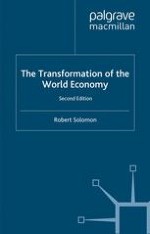1999 | Buch | 2. Auflage
Über dieses Buch
This revised, extended and updated edition of Robert Solomon's well-received The Transformation of the World Economy assesses the remarkable changes in the world economy in recent decades. The impact of marketization, of globalization in both industry and finance, and of increased policy co-ordination as a response at regional and global level, are analysed. The policy impact of changing philosophies of economic policy in the US, Britain, Western Europe, the USSR, Russia and Eastern Europe, China, Asia, the Middle East, Africa and Latin America are analysed.
Anzeige
